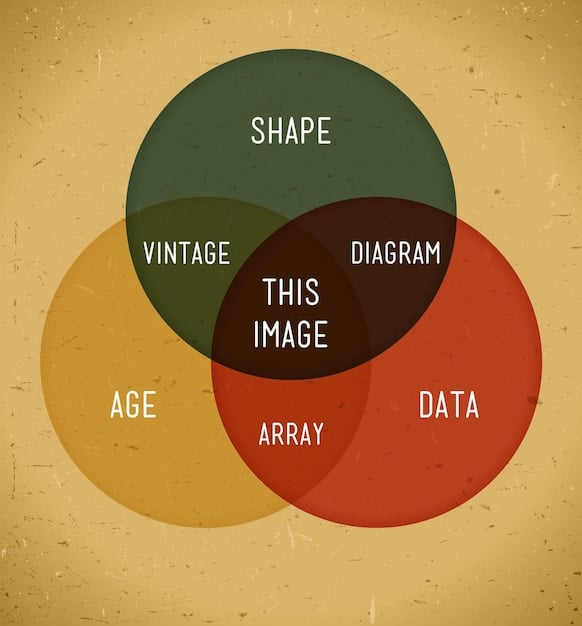Generate $1,000/Month Passive Income: Niche Website Guide 2025

Generating $1,000/month in passive income through a niche website involves identifying a profitable niche, creating valuable content, implementing effective SEO strategies, and monetizing the site through various methods in 2025.
Ready to ditch the 9-to-5 grind and start earning money while you sleep? Creating a niche website is a powerful way to generate $1,000/month in passive income. In this step-by-step guide, we’ll walk you through the entire process, from finding the perfect niche to monetizing your site for long-term success in 2025.
Choosing the Right Niche for Your Website
The foundation of any successful niche website is, well, the niche itself. Selecting the right niche is crucial because it determines your target audience, content strategy, and ultimately, your income potential. But how do you find a niche that’s both profitable and enjoyable?
Passion vs. Profitability
Ideally, your niche should be a sweet spot where your interests intersect with market demand. While passion is important for staying motivated, it’s equally vital to ensure your niche has enough potential for monetization. Don’t let your fondness for historical button collecting blind you to the practicalities of market size.

Keyword Research is Key
Keyword research is your secret weapon. Tools like Google Keyword Planner, Ahrefs, and SEMrush can help you identify keywords with high search volume and low competition. Target long-tail keywords (phrases with three or more words) as they often have less competition and a more specific audience.
- Analyze Search Volume: Look for keywords that people are actively searching for.
- Assess Competition: Determine how difficult it will be to rank for those keywords.
- Consider User Intent: Understand what users are looking for when they search for those keywords.
By carefully analyzing these aspects, you can identify a niche that’s both popular and has room for growth.
Selecting the right niche is a balanced act of assessing your passions, validating market demand, and conducting thorough keyword research to ensure profitability. A well-chosen niche will allow you to create a sustainable, thriving website that generates passive income for years to come.
Setting Up Your Website for Success
Once you’ve nailed down your niche, it’s time to build your website. This involves choosing a domain name, selecting a hosting provider, and setting up your content management system (CMS). Don’t be intimidated – it’s easier than it sounds!
Choosing a Domain Name
Your domain name is your website’s address, and it plays a significant role in branding and search engine optimization (SEO). Aim for a domain name that’s easy to remember, relevant to your niche, and includes keywords if possible. A ‘.com’ domain is generally preferred, and you can snap yours up using services like GoDaddy or Namecheap.
Selecting a Hosting Provider
Your hosting provider is where your website lives on the internet. Choose a reliable provider with good uptime, fast loading speeds, and excellent customer support. Popular options include Bluehost, SiteGround, and HostGator.
- Uptime: Aim for a provider with at least 99.9% uptime.
- Loading Speed: Choose a provider with fast servers to ensure a good user experience.
- Customer Support: Opt for a provider with responsive and helpful customer support.
Installing WordPress
WordPress is the most popular CMS in the world, and for good reason. It’s easy to use, highly customizable, and SEO-friendly. Most hosting providers offer one-click WordPress installation, making the setup process a breeze. It takes only moments to get WordPress up and running.
By carefully selecting your domain name, hosting provider, and CMS, you’re setting the stage for a website that’s both user-friendly and optimized for search engines. This groundwork is essential for attracting visitors and ultimately generating passive income.
Creating High-Quality, Engaging Content
Content is king, especially when it comes to building a successful niche website. Your content should be informative, engaging, and valuable to your target audience. But creating high-quality content is about more than just writing well; it’s about understanding your audience and providing them with solutions.
Understanding Your Audience
Before you start writing, take the time to understand your audience. What are their pain points? What questions do they have? What kind of content do they enjoy? Answering these questions will help you create content that resonates with your audience.
Types of Content to Create
Variety is the spice of life, and the same holds true for your website. Mix up your content with different formats to keep your audience engaged. Consider creating:
- Blog Posts: Share your expertise, offer valuable tips, and provide in-depth analysis of your niche.
- How-To Guides: Walk your audience through specific tasks or processes.
- Reviews: Provide honest and unbiased reviews of products or services in your niche.
Optimizing Content for SEO
Creating great content is only half the battle; you also need to optimize it for SEO. This involves using relevant keywords, writing compelling meta descriptions, and structuring your content for readability.

Consistently producing high-quality content is pivotal for attracting and retaining visitors. By blending insightful information with SEO best practices, you can establish your website as a go-to resource in your niche, fostering both user engagement and search engine visibility.
Implementing Effective SEO Strategies
Search engine optimization (SEO) is the art and science of getting your website to rank higher in search engine results pages (SERPs). While SEO can seem complex, the basics are relatively straightforward. Focus on optimizing your website for both search engines and users.
On-Page SEO
On-page SEO refers to the optimizations you make directly on your website. This includes:
- Keyword Optimization: Use relevant keywords in your titles, headings, and body text.
- Meta Descriptions: Write compelling meta descriptions that entice users to click on your website.
- URL Structure: Create clean and descriptive URLs (e.g., yourwebsite.com/how-to-build-a-niche-website).
- Image Optimization: Compress your images to reduce loading times and add alt text to improve accessibility.
Off-Page SEO
Off-page SEO refers to the activities you do outside of your website to improve your search engine rankings. This primarily involves:
Building Backlinks
Backlinks are links from other websites to your website, acting as votes of confidence that signal to search engines that your site is a credible resource.
- Guest Blogging: Write guest posts for other websites in your niche and include a link back to your website.
- Resource Pages: Create valuable resources that other websites will want to link to.
- Broken Link Building: Find broken links on other websites and offer your website as a replacement.
SEO is an ongoing process that requires continuous effort and adaptation to algorithmic changes. By implementing on-page and off-page SEO strategies, you can gradually improve your website’s visibility in search results, driving organic traffic and increasing your chances of generating passive income.
Monetizing Your Niche Website
Now comes the exciting part: turning your website into a money-making machine. There are several ways to monetize a niche website, each with its own pros and cons. Consider a combination of strategies to maximize your income potential.
Affiliate Marketing
Affiliate marketing involves promoting other companies’ products or services on your website and earning a commission for every sale made through your unique affiliate link. It’s generally one of the quickest and most popular ways to monetize a niche site.
- Choose Relevant Products: Promote products that are relevant to your niche and audience.
- Write Honest Reviews: Provide honest and unbiased reviews of the products you promote.
- Use High-Quality Images: Showcase the products with high-quality images and videos.
Display Advertising
Display advertising involves placing ads on your website and getting paid based on impressions (the number of times the ad is displayed) or clicks. Google AdSense is the most popular platform for display advertising.
Selling Digital Products
If you have expertise in your niche, consider creating and selling your own digital products, such as eBooks, online courses, or templates. Selling digital products can be more lucrative than affiliate marketing or display advertising, but it requires more effort upfront.
Implementing a diversified monetization strategy is key to building a sustainable passive income stream with your niche website. Combining affiliate marketing, display advertising, and potentially selling your own digital products allows you to tap into multiple revenue channels, reducing risk and maximizing your overall earnings.
Analyzing and Optimizing for Long-Term Success
Building a profitable niche website is not a one-time effort; it’s an ongoing process of analysis, optimization, and adaptation. Regularly monitoring your website’s performance and making necessary adjustments is crucial for long-term success.
Tracking Key Metrics
Use tools like Google Analytics to track key metrics such as:
- Traffic: The number of visitors to your website.
- Bounce Rate: The percentage of visitors who leave your website after viewing only one page.
- Conversion Rate: The percentage of visitors who complete a desired action, such as making a purchase or signing up for an email list.
Optimizing for User Experience
User experience (UX) is a critical factor in the success of your website. If your website is difficult to navigate, slow to load, or visually unappealing, visitors are likely to leave. To improve UX:
Keeping Up with Industry Trends
The online landscape is constantly evolving, and what works today may not work tomorrow. Stay up-to-date with the latest trends and best practices in your niche and in the broader digital marketing world. The more in tune with industry shifts you are, the more prepared you can be for changes.
Consistently analyzing your website’s performance metrics enables you to identify areas of improvement and ensure that your website remains competitive, user-friendly, and aligned with evolving search engine algorithms. This continuous loop of analysis and optimization is essential for sustaining and growing your passive income stream over the long term.
| Key Point | Brief Description |
|---|---|
| 💡 Niche Selection | Find a profitable and enjoyable niche. |
| 🚀 Website Setup | Choose a domain, hosting, and install WordPress. |
| ✍️ Content Creation | Create high-quality and engaging content. |
| 💰 Monetization | Use affiliate marketing, ads, or digital products. |
▼
Passive income is income earned with minimal ongoing effort. In the context of a niche website, it’s income generated even when you’re not actively working on the site.
▼
The timeline varies depending on factors like niche competitiveness, content quality, and SEO efforts. It can take anywhere from 6 months to 2 years to reach $1,000/month.
▼
Evergreen niches with broad appeal and a wide range of products or services to promote are ideal. Examples include health & wellness, personal finance, and technology.
▼
The cost can range from $50 to a few hundred dollars per year, depending on your choice of domain, hosting, and premium tools. There are both affordable and scalable options.
▼
Yes, absolutely. While the online landscape evolves, the fundamental principles of providing value and solving problems remain relevant. With the right approach, it’s still very possible.
Conclusion
Building a profitable niche website is a journey that requires dedication, effort, and a willingness to learn and adapt. By following the steps outlined in this guide, you can set yourself on the path to generating $1,000/month in passive income and achieving your financial goals. So, take that first step, find your niche, and start building your future today!





